Forceful Remedy

Moscow mural (provided by Maria Papanthymou)
This is the second in a series of 16 posts offering an analysis of “Covid Codes” from a global perspective. SEMIOVOX has invited consulting semioticians from around the world to augment the Coronavirus-related meaning map whose lineaments we revealed here in a Spring 2020 series. We are grateful to our talented and generous colleagues, who are individually acknowledged in each series post that features their contributions.
The theme we’ll explore in this installment is: FORCEFUL REMEDY. Our definition of this theme: Seeking and destroying illness, with maximum impact.
While this series’ previous theme (QUICK FIX) is governed by the Pharmacist paradigm — i.e., the source codes within that theme are about rapid relief of symptoms, for people too busy to slow down — this one is governed by a more medical, authoritative paradigm: the Doctor. The consumer desire reflected by the codes here are not about a fast-acting remedy, but rather a weapon-like, explosively strong medicine that mercilessly and relentlessly overwhelms, pulverizes, and destroys the symptoms of illness in your body.
A central concept represented by the doctor paradigm is the practice and precept of strong medicine. One of the two key things we desire from the doctor figure is a thorough, powerful medicinal treatment guaranteed to knock out whatever ails us. (The other key thing? We’ll discuss that in the next installment.) There’s a zooming-in of perspective associated with this discursive complex: We’re not thinking about getting back to our everyday routines; and we’re certainly not thinking about the big picture — the purpose of our existence. We just want the illness to be eradicated from our bodies and/or nations.
As with the previous theme, we are hampered in our ability to surface source codes here because the world has only recently begun to vaccinate against COVID. So the codes here are also drawn from the closely related space of Cough/Cold/Flu brand communications. However, we anticipate that Covid relief efforts will increasingly activate against this theme’s codes.
Our study suggests that the Forceful Remedy thematic space is brought to life for consumers by at least three “source codes” (signs). We’ve named these source codes: Strong Action, Power Packed, and Ice Action.
Strong Action
The Strong Action source code’s norm (that is to say, its idea, value, higher-order benefit) can be described as follows: Comprehensive, long-lasting, powerful treatment of all sorts of symptoms.
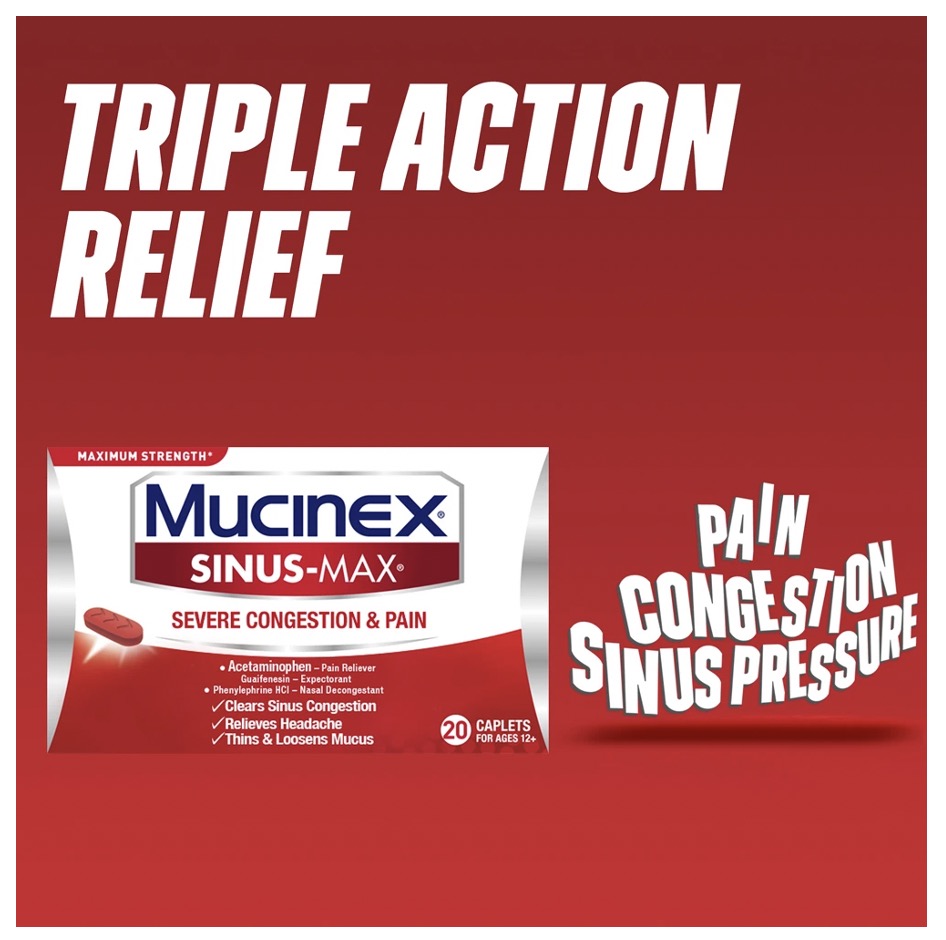
Visual cues of Strong Action include:
- Clocks, indicating long-lasting effects
- Check-marked lists of symptoms treated
- Bold-faced, all-caps type treatment
- Italicized/capitalized adjectives added to product name
- Use of red may suggest “forceful”
Verbal cues of Strong Action include:
- Lists of symptoms treated: e.g., “Congestion, body aches, and more”; “sniffling, sneezing, coughing, aching, fever”; “coughing, aching, stuffy head, fever, sore throat”; “triple action relief ”
- Superlative boasts of strength, like a circus strongman: “the only sinus relief with the strength of Advil”
- Additional adjectives, added to product name, often in italics/caps: “ Tylenol Cold + Flu SEVERE”; DayQuil SEVERE”; “Max”
- Long-lasting: “For 12-hour relief ”; “Nothing lasts longer”

Aiyana Gunjan (India) submits the image above. Although a lockdown is about prevention rather than eradication, the color red and the lock and chains suggest Strong Action coding, while the map of India evokes “a sense of a nationalist movement — I’m sacrificing personal comfort/pleasure to save my country.”
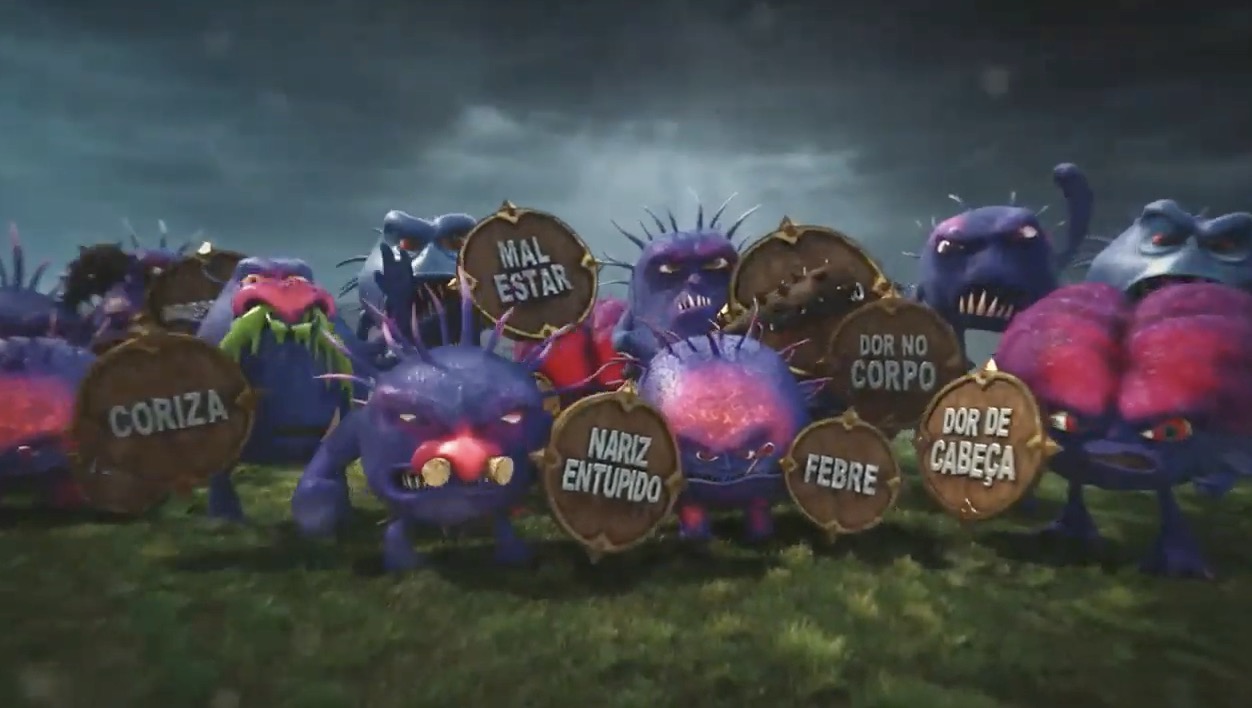

Mariane Cara (Brazil) sends us a commercial for Benegrip, in which a savage horde of embodied flu symptoms mass for an attack, while Benegrip — depicted as a benign monster, one whose shield is a blister-pack of Benegrip pills — lines up to fight off the invaders. (PS: Those of us fascinated by the horn-hatted, face-painted, spear-wielding “Q Shaman” who participated in the attack on the January 6 storming of the US Capitol can’t help but see this commercial through that lens.)

Maciej Biedziński (Poland) sends us the commercial above. “Ibuprom RR Max uses karate as a metaphor for the medication’s powerful attack against even the toughest opponent (in this case, the opponent is: sudden pain.)” This is a powerful example of the governing metaphor here: Going on the attack, against what ails you, rather than just seeking to erect defenses.
We can expect to see this code activated against as efforts to persuade the vaccine-hesitant to be vaccinated increase around the world.
Power Packed
The Power Packed source code’s norm (that is to say, its idea, value, higher-order benefit) can be described as follows: Bursting with ingredients — and sheer energy — that can be barely be contained.
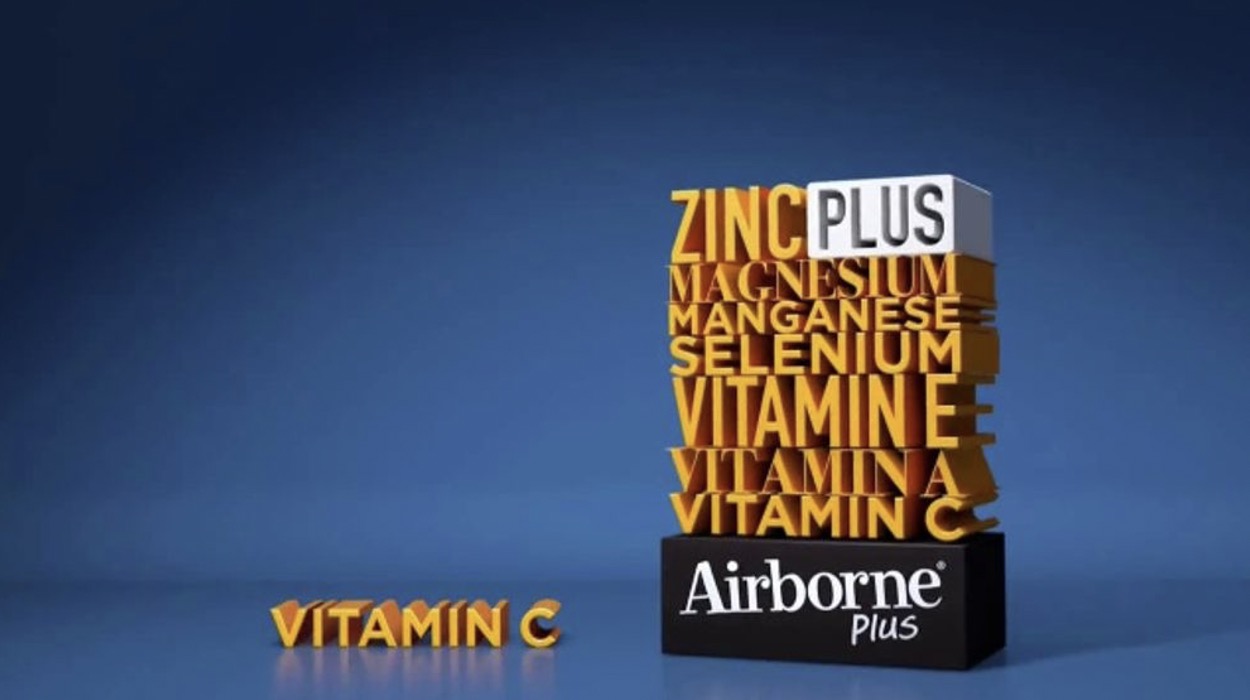
Visual cues of Power Packed include:
- Tablets, lozenges, powders, packs, etc., shown glowing, shining, radiating energy; like a star about to go supernova; bursting at the seams.
- Rays, vapors, beams emanating from the product or package.
- Swooshes and swirls surrounding the product.
- Diagrams showing how multiple remedies and/or ingredients were combined into one super-powerful format.
Verbal cues of Power Packed include:
- Multiple remedies in one format: “One tablet dose!”, “Max level of two pain relievers”
- Overwhelming symptoms: “Maximum strength”
- Better than the competition: “25% more concentrated power for cold relief”
We can expect to see many more examples of glowing, bursting, radiating vaccine vials and syringes in the months to come. Here are a couple:

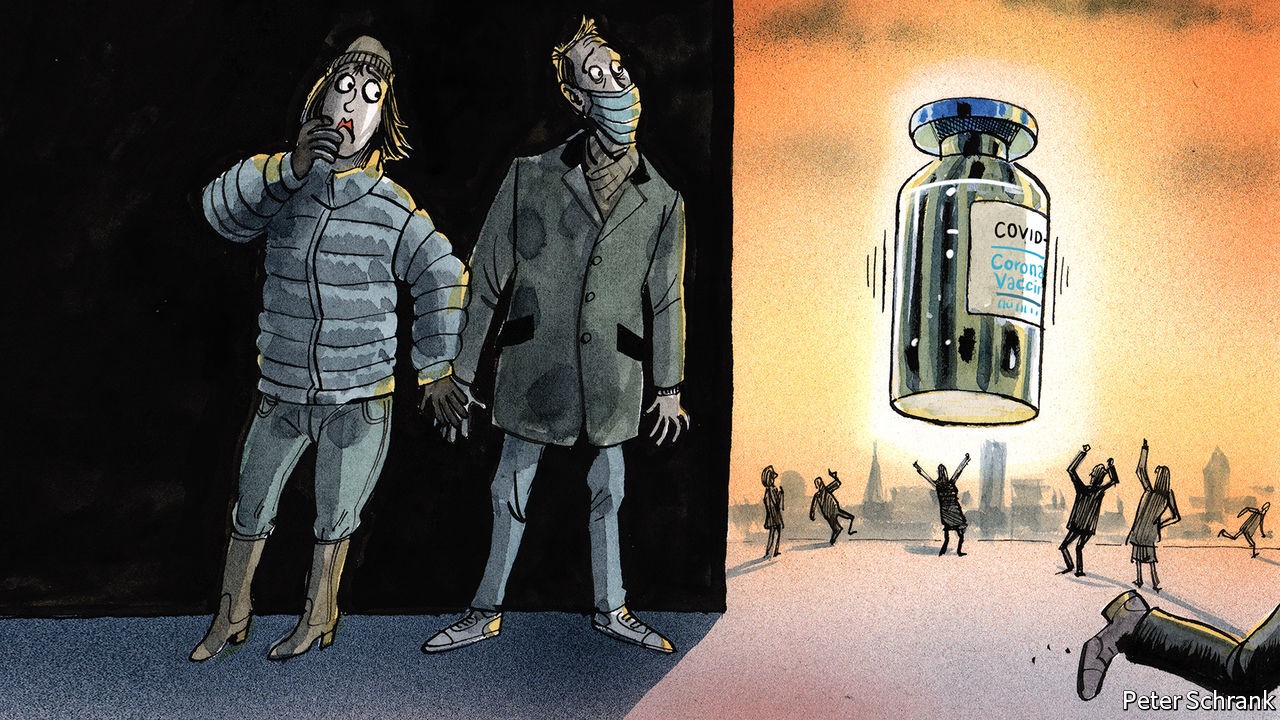
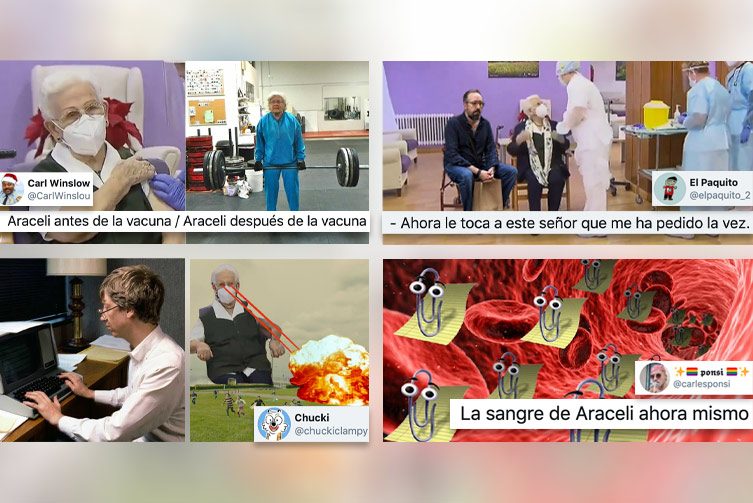
Gabriela Pedranti (Argentina/Spain) points to an amusing Power Packed code-related meme referencing Araceli Hidalgo, aged 96, who in December 2020 became the first person in Spain to receive a vaccine against Covid-19. Here we see the vaccinated Araceli lifting huge weights, and blowing things up with her laser-vision. (Her blood is depicted as being populated by “Clippit,” the intelligent user interface for MS Office; Gabriela notes that this refers to the spurious Bill Gates microchip/vaccine conspiracy theory.) This is a sophisticated example of humor, which pokes fun at Forceful Remedy-style coding while also celebrating it at the same time.
Ice Action
The Ice Action source code’s norm (that is to say, its idea, value, higher-order benefit) can be described as follows: The weaponized force of sub-zero temperature, brought to bear against painful symptoms. Relevant to mentholated/eucalyptus/mint products.
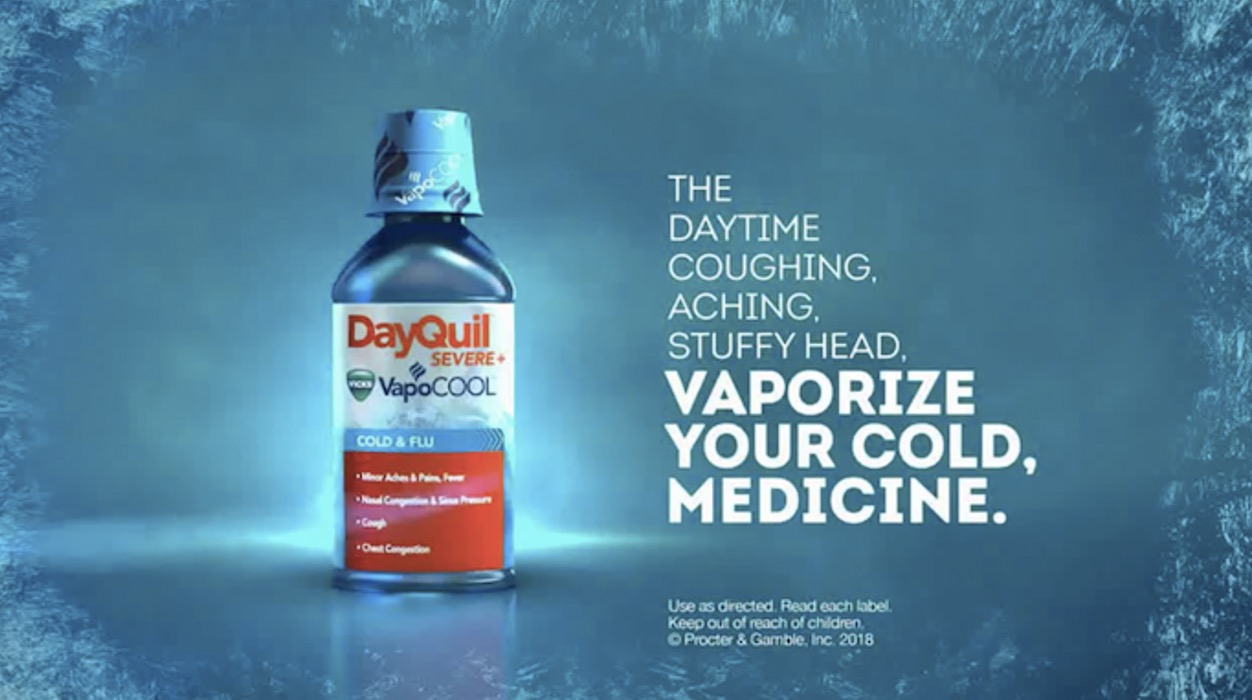
Visual cues of Ice Action include:
- Aggressive, overwhelming ice. Leaves, flowers, etc., coated with ice. Throat and tongue coated with ice. World turned blue with ice.
- Ice vapor/mist surrounding things and freezing them solid — like something out of a fantasy or sci-fi movie.
Verbal cues of Ice Action include:
- Menthol/eucalyptus/mint associated with cooler temperatires: “Cool mint”, “Vicks VapoCOOL”
- Coolness weaponized, rapidity: “For a nasty cold, take new Dayquil Severe with Vicks VapoCOOL and vaporize it with an intense rush of Vicks vapors.” “Instant cooling menthol burst.” “Cools in seconds.” “An immediate blast of cooling sensation.”
- Cooling sound effects. E.g., the choir who appears and sings “Aaaah” in Dayquil and Nyquil Severe with Vicks VapoCOOL commercials.

This is an example of a code that makes sense in the Cough/Cold/Flu space but not in the Covid space. Despite rumors to the contrary, cold weather cannot kill the Coronavirus. In fact, when it’s colder, people spend more time indoors; and the holidays (here in the US, at least) lead to increased numbers of people traveling. These combined dynamics lead to greater congregation and increased spread of the virus.


On the other hand, we have heard a lot about the importance of keeping the vaccine at subzero temperatures en route from the manufacturer to its various destinations, so perhaps we’ll see this code pop up in that context? See, for example, the image below used as an illustration in Discover.

What these three Forceful Remedy source codes — and we’re sure there are others still waiting to be surfaced — have in common is an objective view of the body, as a site of treatment by medicine. This is not an empathetic theme; it certainly isn’t holistic. The body/nation is depicted as a battlefield; an enemy has invaded our territory, and must be crushed.
It’s all about mode of action — not what the brand means, but how the product works. Does the product release innumerable tiny bubbles/molecules which effervesce within the body in some quasi-intelligent way that aids healing? Does a vapor or cloud emerge and penetrate every fiber of your physical form? Perhaps the product is so power-packed that its force can barely be contained within the bottle or pack, not to mention within the pill or liquid?
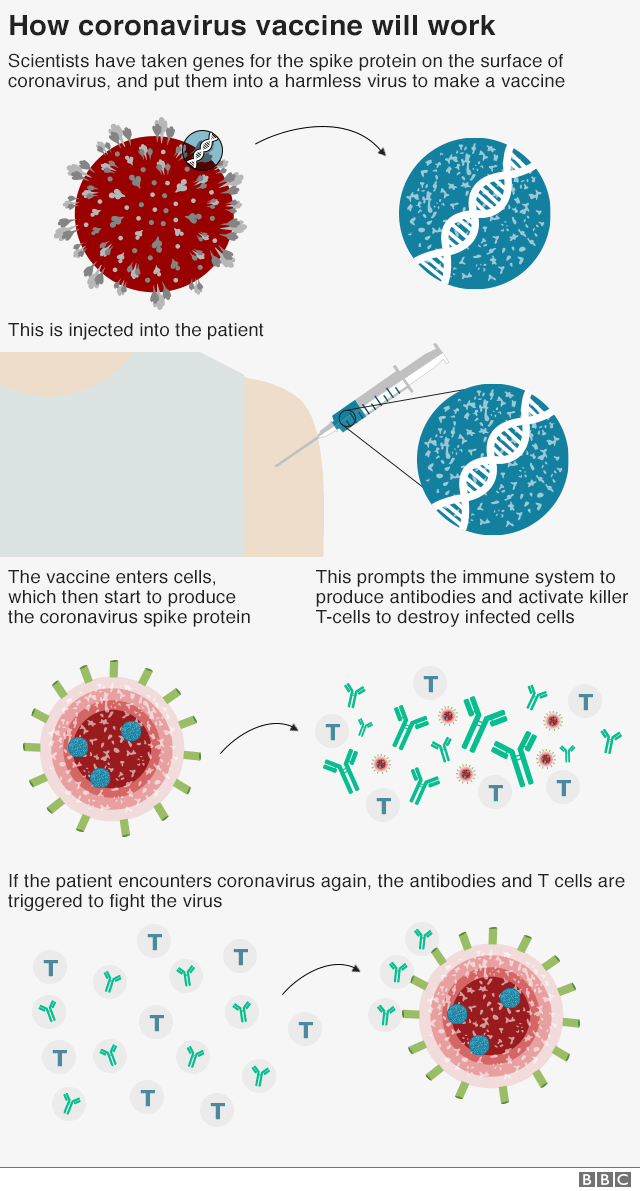
Forceful Remedy source codes are to be spotted in two places, typically.
- On the pack, where one finds a depiction of the pill/liquid (or ingredients) surrounded by swooshes, bursts, rays, swirls, splashes, and emanations.
- And also in those Phantom Tollbooth-like moments during advertisements, wherein a naturalistic scene — a person at work, say, sneezing and coughing; a mother trying to do laundry and run her business, through crippled by a cold — gives way to an animated sequence in which we are treated to a demonstration of the product’s powerful, efficacious mode of action. If these too-often cheesy sequences remind you of Donald in Mathmagic Land and other educational featurettes (e.g., The Story of Menstruation, How to Catch a Cold, or Toot, Whistle, Plunk and Boom) produced in the 1940s and ’50s for schoolchildren, that’s on purpose. We’re being talked down to, by medical authorities who claim to know what’s best for us.
In times of crisis, many of us — around the world — are attracted to the notion of a forceful, even militaristic approach to ridding our “territory” (e.g., our body, our country) of invasive aliens. This sort of imagery and tonality can be light-hearted, but there is a dark undercurrent at work.
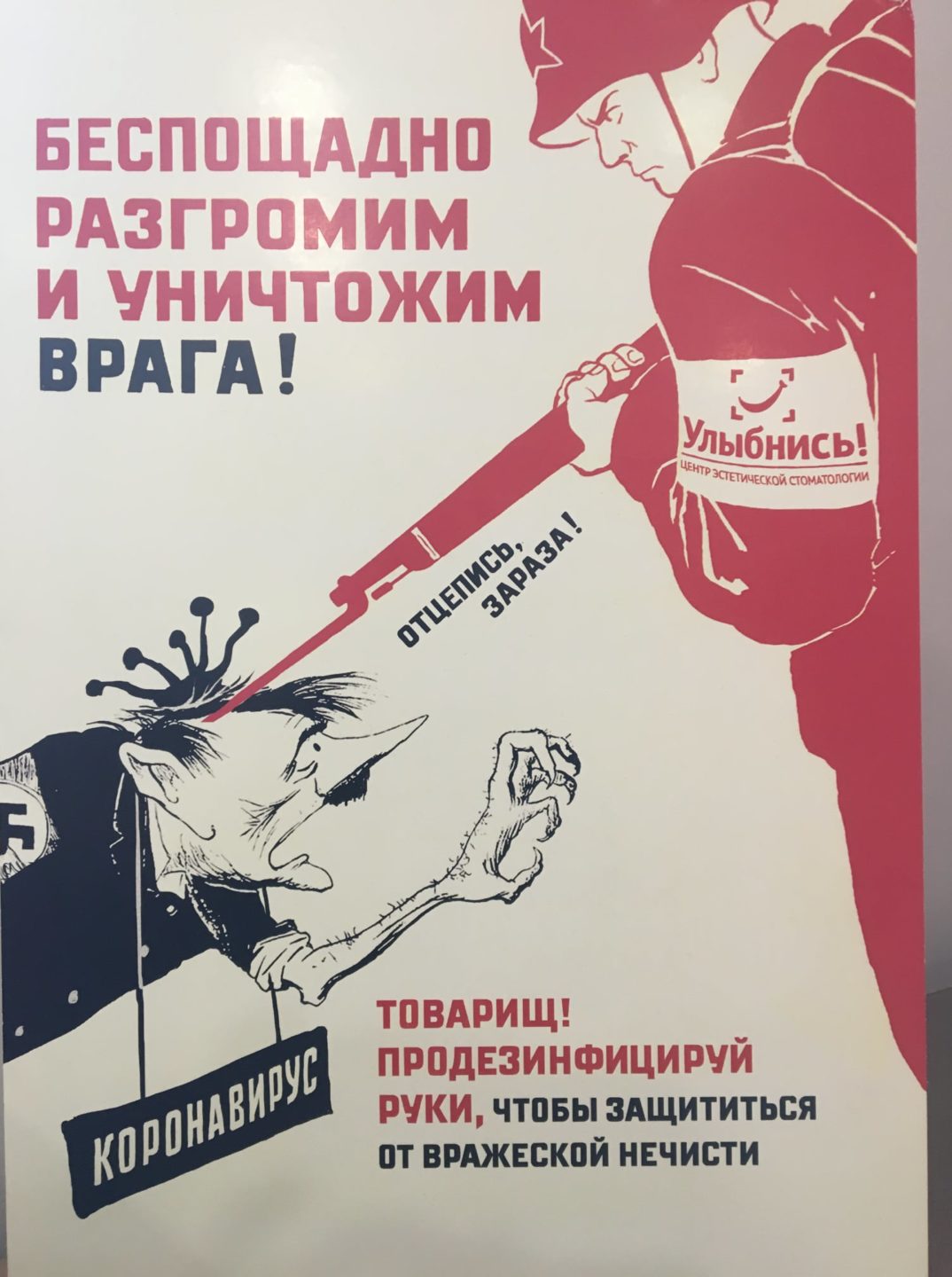
Maria Papanthymou (Russia) spotted this poster in the waiting room of a Moscow dental clinic. It urges us to keep disinfecting our hands, with the WWII-era slogan “We will mercilessly crush and destroy the enemy.” The Russian soldier bayoneting Hitler wears the dentist’s logo on his sleeve.

Here in the US, the COVID-19 epidemic was mishandled by the Trump administration — which favored Forceful Remedy tonality while in practice placing its faith in the power of positive thinking. (A schizophrenic approach, with predictably abysmal results.) In April 2020, for example, Trump suggested at a White House briefing that an “injection inside” the human body with a disinfectant-like bleach or isopropyl alcohol could help combat the virus. “And then I see the disinfectant, where it knocks it out in a minute,” he said. “One minute. And is there a way we can do something like that, by injection inside or almost a cleaning?”
The appeal of Forceful Remedy coding is all too obvious. Meanwhile, a more rational part of our brain reminds us that this approach is often too punitive, too merciless and harsh. It might end up destroying what it was supposed to protect.
The next series installment will be: INFALLIBLE AUTHORITY.
Also see these series: COVID CODES | SEMIO OBJECTS | MAKING SENSE | COLOR CODEX

